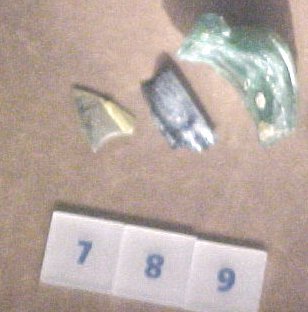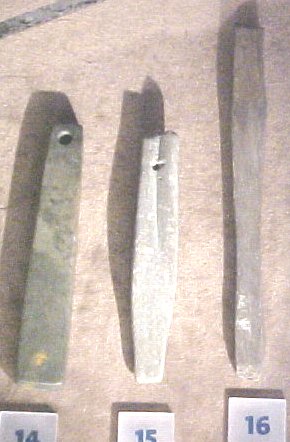|
|
|
|
|
 |
Viking iron technology revolutionized the domestic front by introducing a variety of durable, strong, unburnable goods that were used for food preparation. |
|
|
 |
|
|
|
 |
|
|
|
 |
|
|
|
 |
|
|
|
 |
Vikings made cooking vessels and oil lamps out of soapstone. Soapstone is easily shaped with iron tools, holds heat well, and is more durable than ceramics. |
|
|
 |
|
|
|
 |
|
|
|
 |
The weaving sword was used to beat the tread as it was laid in to the loom, ensuring a tight weave. |
|
|
 |
Women were responsible for turning cloth into clothing. Iron scissors were worn by a woman on a chain with her keys. |
|
|
 |
|
|
|
 |
15 Slate Whetstone: 16 Slate Whetstone: Hones and Whetstones were used to give the primary edges to swords, scissors, shears, knives, iron tipped plows, and scythes. Small hones, most of which were perforated for carrying, were constantly in use. |
15 Iceland 16 Iceland |
950 AD 950 AD |
 |
|
|
|
 |
Sheep wool thread was woven on an upright loom, usually not more than four feet wide to from bolts of cloth. Loom Stones were used as weights to keep the wool tight on the loom. A weaving sword was also used with the loom |
|
|
 |
|
|
|
 |
Viking were concerned about their physical appearance. A Slickstone was used to flatten seams on a smoothing board like this decorated one made of Whalebone. |
|
|
 |
|
22 Sweden |
850 AD |
 |
|
|
|